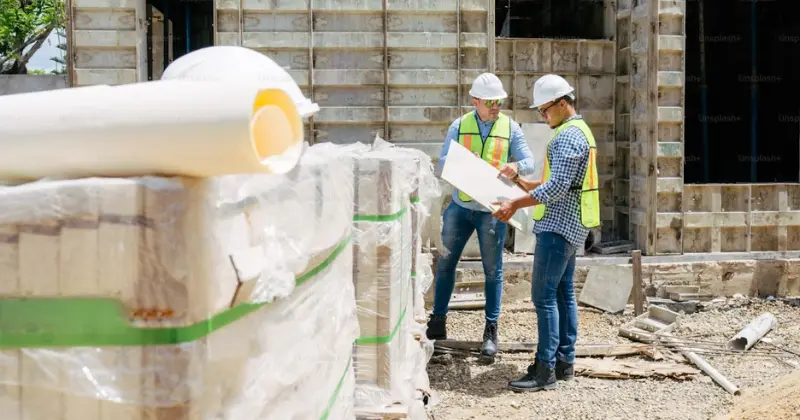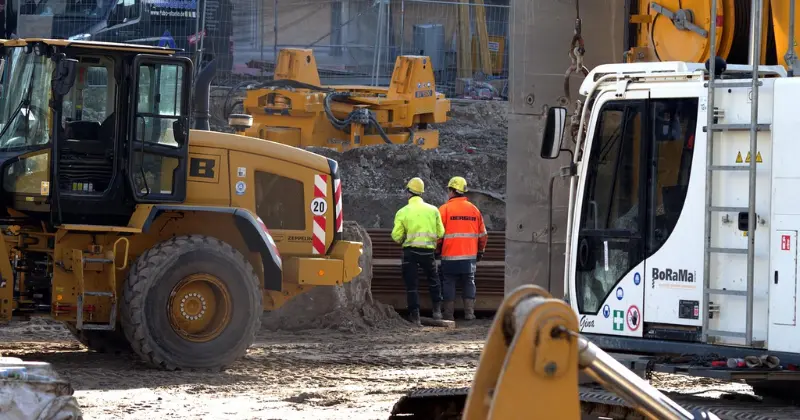11 mins read
Exploring the Role of the Specification Writer: Tips for Junior Specifiers

Specifications are written documents that outline the scope and methods of work, materials, workmanship, permits, timelines, etc., for a project. These documents ensure that all aspects related to the resource and quality requirements of the project are clearly communicated to all parties, avoiding the risk of misunderstandings that lead to costly rework. They complement construction drawings, serving as instructions to guide contractors and their teams about how things should be installed or built.
Considering the importance and technical nature of these documents, it is crucial that a professional with the necessary knowledge and experience develops them. That is where spec writers come in.
These highly skilled professionals are responsible for developing specs, considering the best material and equipment choices, and complying with building codes, safety protocols, and the client’s quality requirements. In this blog, we’ll dive deeply into the role.
What Is a Spec Writer?
A spec writer, also known as a specifier, is a professional who develops construction specifications to complement project drawings. Construction specification writers often work in architectural firms or as independent consultants for construction projects.
Hiring a spec writer is critical to the success of complex construction projects. These professionals collaborate with the design and construction teams to ensure that all relevant requirements and information about materials, labor, equipment, and more are combined into a detailed document that can be referenced throughout the project.
Spec writers must be detail-oriented and have excellent communication skills, which allow them to convey information in a way that is understandable to anyone who reads it. It is also essential to know that a spec writer is not responsible for checking that the different processes in the project are compliant with codes and regulations; this is the responsibility of whoever is carrying out the work, like the architect for the design or the contractor for the construction works. Spec writers can recommend products, materials, or methods they know can make the building more efficient, but the owner and design team make the final decision. In the end, a specification writer helps decision-makers make informed decisions for the benefit of the project.
What are the Key Responsibilities of a Spec Writer?

Architectural specification writers play a crucial role in successfully completing a project. The primary responsibility of these professionals is to craft detailed descriptions of the materials, equipment, products, and labor required to complete the work, among other things described below.
Write detailed specifications: As mentioned, the most important responsibility of a spec writer is to write thorough, clear, and straightforward specifications that outline the materials, products, equipment, and installation methods to be used in a project, ensuring that everything meets regulatory and quality standards. Specs should be written in clear, concise, and consistent language that is understandable for anyone, regardless of their technical background. They should also be carefully aligned with drawings and design plans to ensure contractors, suppliers, and anyone else who needs them can use them as instructions for regulatory compliance and safety and quality assurance.
Help achieve ISO compliance: Specification writers are critical in ensuring the project complies with several building codes and regulatory requirements. One is the ISO standards, which provide globally recognized safety, sustainability, quality, and efficiency guidelines. Specification writers must ensure that materials and construction methods adhere to these standards to avoid issues with the client or potential penalties.
Collaborate with others: Specification writers must collaborate and communicate with other construction roles as a key part of their daily work. They work closely with architects, engineers, project managers, and others to ensure they correctly interpret the design intent into the technical documentation and make sure specs are feasible, cost-effective, and aligned with the overall project goals. Effective communication mitigates the risk of discrepancies or misunderstandings between the design and specs.
Updating and reviewing specs: Another key responsibility of this role is continuously reviewing and updating specs to reflect any design modifications, material substitutions, or other changes. Continuous updates ensure specs remain relevant and prevent miscommunications that can cost the project money and time.
What Makes a Good Spec Writer?

There are various skills a professional spec writer should possess to be considered the best. These include:
Industry knowledge and experience: The first requirement, which we mentioned earlier in the post, is extensive knowledge and experience in the construction, architecture, and engineering industries. This means knowing the best materials, equipment, and methods for each project to achieve the expected results.
Excellent written & research skills: Conveying critical technical information in a concise, clear, and understandable written language is a critical skill these professionals should possess. They must be able to explain technical concepts in a simple and summarized manner for everyone to understand. They must also have research skills to always stay up-to-date about the latest building codes, technologies, and materials to make the best decisions for the projects they work on.
Problem-solving and critical thinking: Critical thinking and problem-solving are other fundamental skills people in this role should have. Unexpected change is almost unavoidable in construction projects, and spec writers must be able to react quickly to find the best solutions and update specs.
Attention to detail: Given the detailed and meticulous nature of the spec writing process, these professionals should pay close attention to detail to avoid small errors or vague wording that can lead to contract disputes or construction defects. They should also always proofread everything before submitting it to other stakeholders.
Sustainability knowledge: Sustainability has become a major priority in the AEC industry, making sustainable construction knowledge about sustainable methods, energy sources, and materials fundamental for this role. This is where the research part of this job is more relevant, as the spec writer needs to stay up-to-date about the latest discoveries and developments in the sustainable construction field.
Digital construction technologies: Lastly, these professionals should have strong knowledge and skills about commonly used digital construction technologies and how they are integrated into a project’s workflows. They should also be able to use them to write better specs and find better solutions for the project. For example, BIM-based specs allow for real-time updates, clash detection, and data-driven insights that can significantly improve the process.
How do You Become a Specifications Writer? Career Path
The path to becoming a professional spec writer is first to obtain a bachelor’s degree in architecture, as this is the preferred degree by companies hiring for this role. However, a degree in engineering or construction management can also get you on the path to becoming a spec writer when complemented with the right work experience.
Once you’ve gotten your degree, you must gain some valuable experience in architecture and construction, especially building codes, standards, materials, and more, to become a suitable candidate for a specification writing position.
Candidates seeking to become professional architectural specification writers seek additional certifications, such as the Certified Construction Specifier (CSS) from the Construction Specifications Institute (CSI). This title certifies that the holder is a “skilled product researcher who knows how to investigate and identify cost-effective, efficient solutions and then communicate those solutions through the specifications.”
As they gain more experience, these professionals can progress into senior specifications writers or specifications managers. This last role, also known as a specifier, involves more than just writing specs but also assisting with their expertise throughout the entire project. It is important to note that the definitions of specifier and spec writer will vary from company to company, with some considering them the same. You can check out our construction specifier blog for more information about this topic!
Top 8 Tips for Junior Spec Writers

As you’ve learned throughout the blog, this is an interesting and crucial role in the success of any AEC project. Like many other aspects of our industry, the role has mutated over the years. Specs, once made in a static Word file, are now generated, tracked, and updated in online environments, which makes the process more efficient and collaborative.
These technological and innovative advancements have made the world of spec writing more interesting for young professionals. However, there still seems to be a lack of awareness about the profession or an idea that you need a particular background to thrive in this role.
This interesting topic was recently discussed in an episode of RIB SpecTalk, RIB’s webinar series in which professional architects, spec writers, quantity surveyors, and other professionals have in-depth discussions about key topics surrounding the world of specs.
In the episode “How to Bring Junior Professionals Into the Spec Game,” hosts offer valuable tips for young spec writers who want to succeed in this field. Below is the video for the SpecTalk episode and a summary of the main tips provided!
1. Embrace technology
The younger generation of spec writers should take advantage of all the technology available and use it as a competitive advantage over their older peers who are used to the cut-and-paste nature of Word Documents. For example, they should learn how to use specification management software, like RIB SpecLink, which offers better collaboration, automation, and the integration of BIM and Revit, making the entire spec management process more efficient and agile. Learn more about this powerful tool in our insightful RIB SpecLink basics guide.
2. Understand that spec writing is part of design
The hosts of the SpecTalk highlight a common misconception in the field that specs are separate from design. However, specs are an integral part of the design process and should be seen as a tool to enhance it instead of as a separate task. As a young AEC professional, you should understand the role and importance of specs early, as it will make you a more complete designer or spec writer in the future.
3. Research and learn
As mentioned earlier in the post, spec writers must have extensive knowledge about materials, construction methods, assemblies, installation, etc. SpecTalk hosts suggest junior professionals should invest their time learning and researching this technical aspect of the job by attending factory tours, industry workshops, and other instances they can find. They also advise studying standards like the CSI MasterFormat to get invaluable knowledge.
4. Develop strong writing skills
Along with the technical knowledge mentioned above, junior specification writers should also focus on developing outstanding writing skills to convey information clearly and precisely. They should also practice turning complex technical concepts into readable, structured texts for use in the project.
5. Seek mentorship
A career in specifications is rewarding and exciting but also challenging and complex. That is why it is recommended that junior candidates engage with senior spec writers through internships or industry events to accelerate their knowledge and gain valuable tips.
6. Have a collaborative mindset
You should have a collaborative mindset when seeking a career as a spec writer. This is not a standalone job. It involves collaboration with the design team, project manager, and contractors, which requires the ability to have proactive discussions and healthy communication.
7. Don’t be afraid of Spec Writing as a career
The hosts of this SpecTalk episode discussed a very important tip: Young professionals should ignore the misconception that a career as a spec writer is a dead end. Due to the high level of knowledge and expertise in the world of construction, this role opens the doors for several career paths in quality assurance, product development, construction administration, and much more.
8. Be open to change
The construction world is constantly changing, and those who resist it will probably stay behind. Junior spec writers should embrace change as part of their daily work and be prepared to continuously update their skills and knowledge as new technologies, materials, or sustainability practices emerge. That is the true secret to success.
Final Thoughts
As you’ve learned throughout this post, spec writers are highly skilled and knowledgeable professionals who bring unmatched value to construction projects. Well-written specs provide clear guidance that helps prevent misunderstandings and errors that affect the project’s
profitability, quality, and regulatory compliance.
Considering the importance of the process, it is fundamental for spec writers to support themselves with the right technology. RIB SpecLink is powerful specification software that offers unmatched speed, precision, and efficiency when writing and editing specs. Powerful features like increased collaboration, integration of BIM and Revit, web-based and mobile access, and an array of support resources make the platform the best asset for streamlining specification management.
If you want to experience what our professional specification management software can do for you, get your free demo for RIB SpecLink today!

Most Recent
11 mins read
10 mins read
10 mins read
29 mins read
Blog Categories

Ebook











